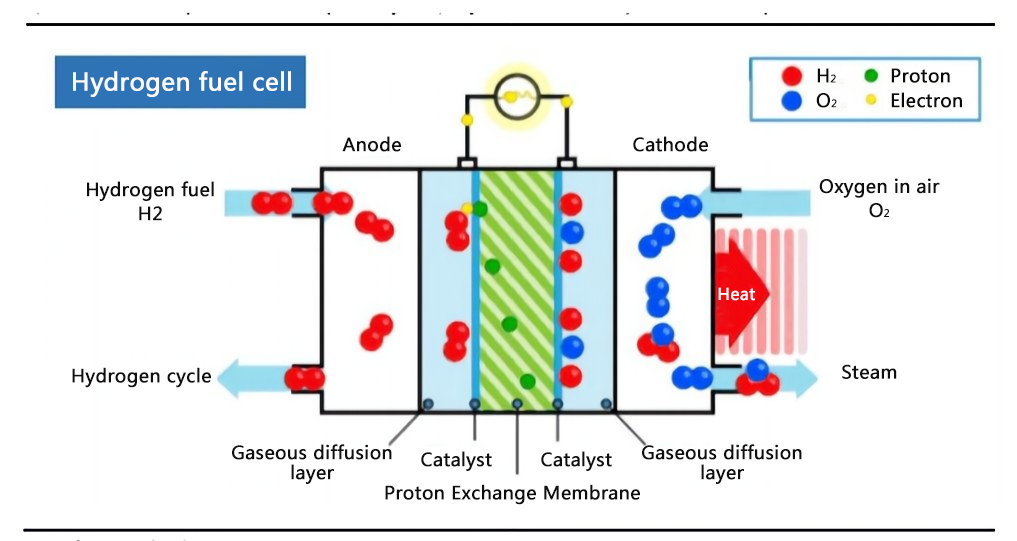- English
- Español
- Português
- русский
- Français
- 日本語
- Deutsch
- tiếng Việt
- Italiano
- Nederlands
- ภาษาไทย
- Polski
- 한국어
- Svenska
- magyar
- Malay
- বাংলা ভাষার
- Dansk
- Suomi
- हिन्दी
- Pilipino
- Türkçe
- Gaeilge
- العربية
- Indonesia
- Norsk
- تمل
- český
- ελληνικά
- український
- Javanese
- فارسی
- தமிழ்
- తెలుగు
- नेपाली
- Burmese
- български
- ລາວ
- Latine
- Қазақша
- Euskal
- Azərbaycan
- Slovenský jazyk
- Македонски
- Lietuvos
- Eesti Keel
- Română
- Slovenski
- मराठी
- Srpski језик
Current development of fuel cell membrane electrodes
2023-02-18
Membrane electrode (MEA) is the core component of fuel cell, which is composed of gas diffusion layer, catalyst layer and proton exchange membrane. It is not only the place of multiphase material transmission, but also the place of chemical reaction of fuel cell. It has a direct impact on the overall chemical performance of the battery, and its cost accounts for 70% of the cost of the reactor. So the membrane electrode is also known as the "heart" of the fuel cell "chip".

Generally speaking, ideal membrane electrodes need to have high power density, low platinum load, long durability and service life and other performance characteristics. The US Department of Energy requires that the durability of vehicle membrane electrodes should be ≥5000h by 2020. Power density ≥1W/cm2 rated power.
In terms of each component of membrane electrode, proton exchange membrane (PEM) is mainly perfluorosulfonic acid membrane, while other composite membranes, highly selective membranes, graphene modified membranes, high-temperature membranes and alkaline membranes are still in the research stage, which are the research hotspot and frontier direction in recent years.
The catalyst is mainly platinum-based. At present, the mainstream catalytic layer is platinum-carbon catalyst, which is a support catalyst supported by platinum on activated carbon. However, as platinum is a precious metal with scarce resources and high cost, the development of low platinum catalyst and platinum free non-precious metal catalyst is considered to be the key direction for membrane electrode enterprises in the future.
The gas diffusion layer is sandwiched between the catalyst layer and the proton exchange membrane, which plays the role of conduction, heat dissipation and drainage. It is composed of the micropore layer and the support layer. The micropore layer is composed of carbon black and hydrophobic agent, and the supporting layer material is mainly carbon paper.
There are four main preparation processes of membrane electrode, which are hot pressing method, gradient method, CCM and ordering. Among them, CCM adopts coil to coil direct coating, screen printing, spraying and other methods to first coat the catalyst on both sides of the proton exchange membrane to form CCM, and then hot pressing the gas diffusion layer on both sides of the CCM to form the film electrode, which is the most widely used and commercially mature preparation method in the market at present





